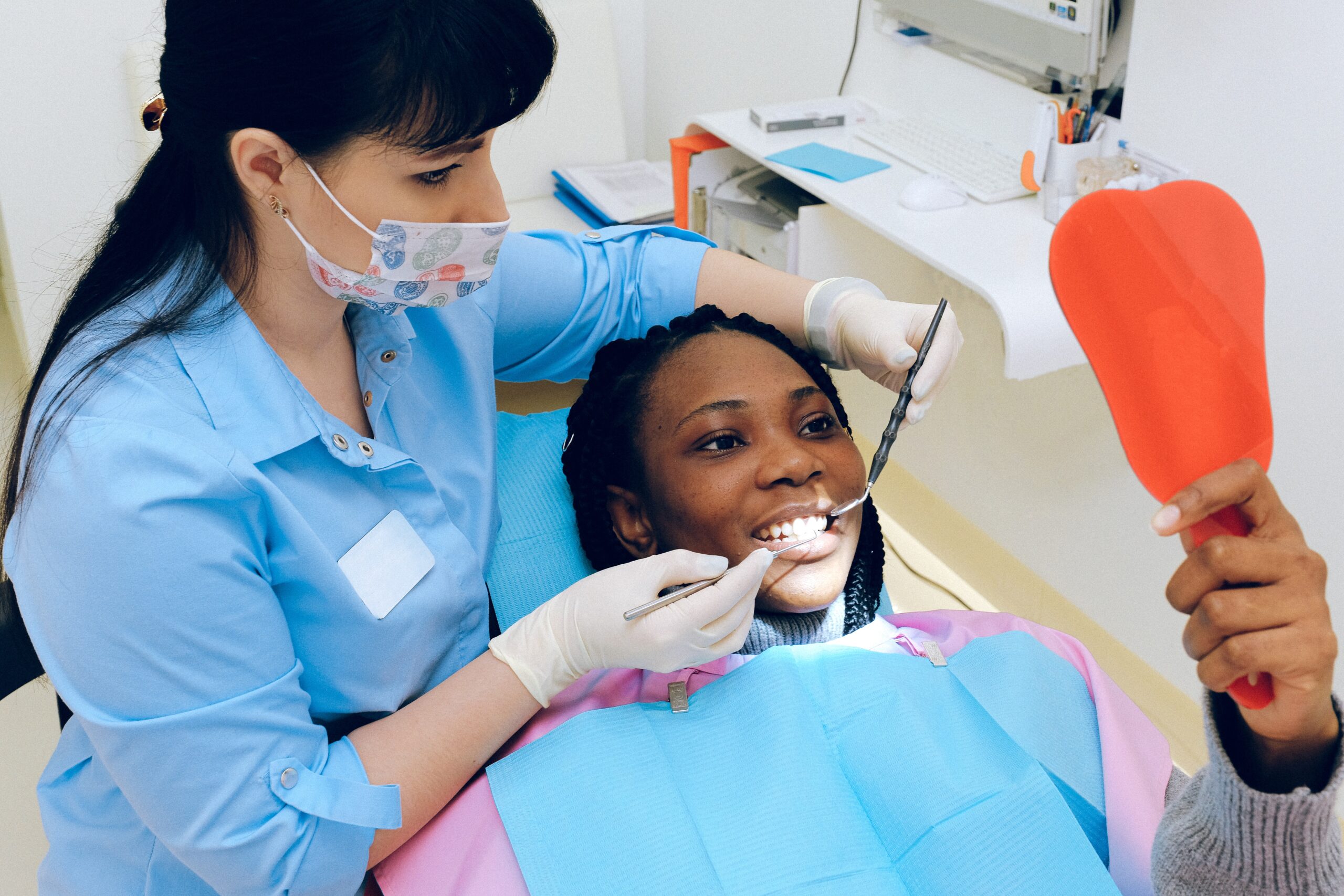Tip #1: Brush with baking soda and hydrogen peroxide
Baking soda and hydrogen peroxide are a classic combination for at-home teeth whitening. Baking soda is a natural abrasive that can help to gently remove surface stains on your teeth, while hydrogen peroxide has antibacterial and bleaching properties that can further brighten your smile. When used together, this mixture can be an effective way to whiten your teeth at home.
To use this method, simply mix a small amount of baking soda with a few drops of hydrogen peroxide to form a paste. Use a toothbrush to apply the paste to your teeth, being careful to avoid your gums. Brush your teeth for about two minutes, then rinse your mouth thoroughly with water.
It’s important to note that you should use this method sparingly, as the abrasive nature of the baking soda can potentially damage your tooth enamel if used excessively. Additionally, hydrogen peroxide can be harsh on your gums if it comes into contact with them, so be sure to avoid your gum line when applying the paste. If you experience any sensitivity or irritation when using this method, it’s best to discontinue use and consult with a dental professional.
Tip #2: Use an activated charcoal toothpaste
Activated charcoal is a popular natural ingredient that has been gaining popularity in recent years for its ability to absorb impurities and toxins. It’s no surprise that it’s also been touted as a natural teeth-whitening agent. Activated charcoal toothpaste works by binding to surface stains on your teeth and helping to lift them away, resulting in a brighter, more polished smile.
To use activated charcoal toothpaste, simply brush your teeth as you normally would with the toothpaste, being sure to brush for the recommended amount of time (usually two minutes). It’s important to note that activated charcoal can be messy, so you may want to use an old toothbrush or be prepared to rinse your sink thoroughly after brushing. Additionally, activated charcoal can be abrasive, so it’s important to use it in moderation and not too frequently to avoid damaging your tooth enamel.
One potential drawback of using activated charcoal toothpaste is that it may not be as effective at removing deep, intrinsic stains as professional whitening treatments. Additionally, if you have sensitive teeth or gums, you may want to be cautious when using activated charcoal toothpaste
Tip #3: Try a whitening mouthwash
Whitening mouthwashes are a convenient and easy way to help brighten your smile. These mouthwashes typically contain ingredients like hydrogen peroxide, which has bleaching properties, or natural astringents like menthol or tea tree oil, which can help to remove surface stains on your teeth.
To use a whitening mouthwash, simply swish the mouthwash around in your mouth for the recommended amount of time (usually 30 seconds to one minute) and then rinse your mouth with water. It’s important to note that whitening mouthwashes may not be as effective at removing deep, intrinsic stains as professional whitening treatments, but they can be a good option for maintaining a bright, white smile in between professional cleanings.
One potential drawback of using a whitening mouthwash is that it may cause sensitivity or irritation in some people, especially if you have a sensitivity to hydrogen peroxide or other ingredients in the mouthwash. If you experience any discomfort when using a whitening mouthwash, it’s best to stop use and consult with a dental professional. Additionally, it’s important to remember that mouthwashes are not a replacement for proper dental hygiene, so be sure to brush and floss regularly in addition to using mouthwash.
Tip #4: Eat crunchy, raw fruits and vegetables

Did you know that certain types of raw, crunchy fruits and vegetables can help to naturally whiten your teeth? That’s because the abrasive nature of these foods can help to remove surface stains on your teeth, resulting in a brighter, more polished smile.
Some good options for teeth whitening through diet include:
- Apples: The crunchy texture of apples can help to gently scrub away surface stains on your teeth.
- Carrots: The abrasive nature of carrots can help to remove surface stains, and the high water content can help to rinse away food particles that can lead to staining.
- Celery: The crunchy texture of celery can help to scrub away surface stains on your teeth.
It’s important to note that while incorporating these foods into your diet can help to naturally whiten your teeth, they should not be considered a replacement for proper dental hygiene. Be sure to brush and floss regularly and visit your dental professional for regular cleanings to maintain a bright, white smile. Additionally, it’s important to be mindful of your overall diet and to avoid consuming too many sugary or acidic foods and drinks, as these can contribute to tooth staining.
Tip #5: Avoid stain-causing foods and drinks
While incorporating teeth-friendly foods into your diet can help to naturally whiten your teeth, it’s also important to be mindful of the types of foods and drinks that can contribute to tooth staining. Some common culprits include:
- Coffee, tea, and red wine: These beverages contain tannins, which can cause staining on your teeth.
- Soda: The high acid content in soda can erode your tooth enamel, making your teeth more prone to staining.
- Berries: While many types of fruit are good for your teeth, some types of berries, like blueberries, blackberries, and cherries, can stain your teeth.
To help prevent future staining, there are several simple swaps you can make in your diet:
- Instead of coffee or tea, try drinking water or unsweetened herbal tea.
- If you enjoy soda, opt for a sugar-free or low-sugar variety.
- Choose water or milk instead of juice or sugary drinks.
- When eating berries, be sure to brush your teeth or rinse your mouth with water immediately afterwards to help remove any stain-causing particles.
By making these simple swaps and maintaining a healthy, balanced diet, you can help to keep your teeth looking bright and white.
Conclusion
In conclusion, at-home teeth whitening options can be a convenient and cost-effective way to help brighten your smile. While these methods may not be as effective at removing deep, intrinsic stains as professional treatments, they can be a good option for maintaining a bright, white smile in between professional cleanings. It’s important to remember that proper dental hygiene, including regular brushing and flossing, is essential for maintaining a healthy, white smile.
If you’re considering trying an at-home teeth whitening method, it’s always a good idea to consult with a dental professional before proceeding. They can help you determine the best course of action for achieving a brighter smile and can provide you with personalized recommendations based on your individual needs and oral health. With the right approach and a little bit of effort, you can achieve a bright, white smile that you’ll be proud to show off.




